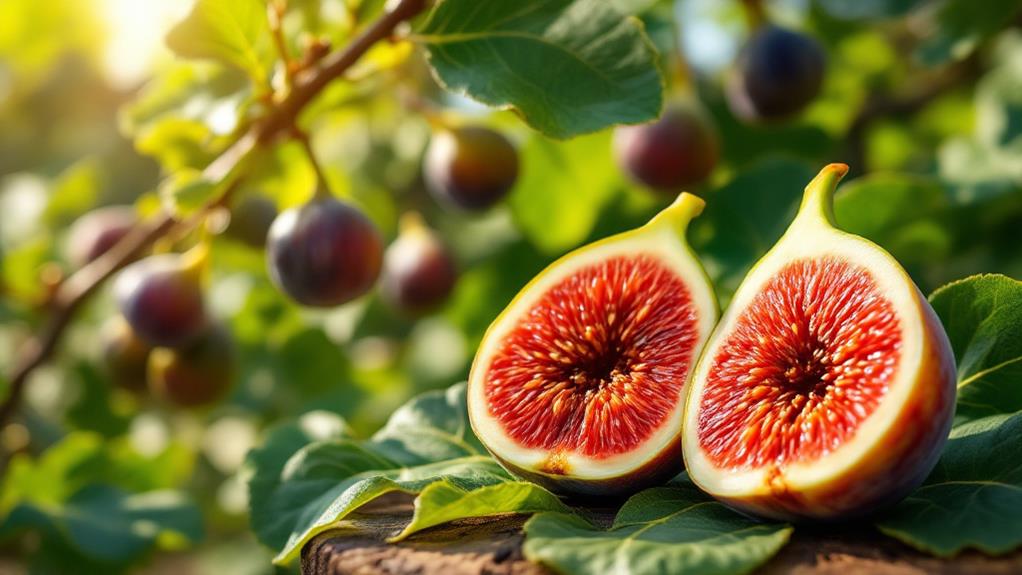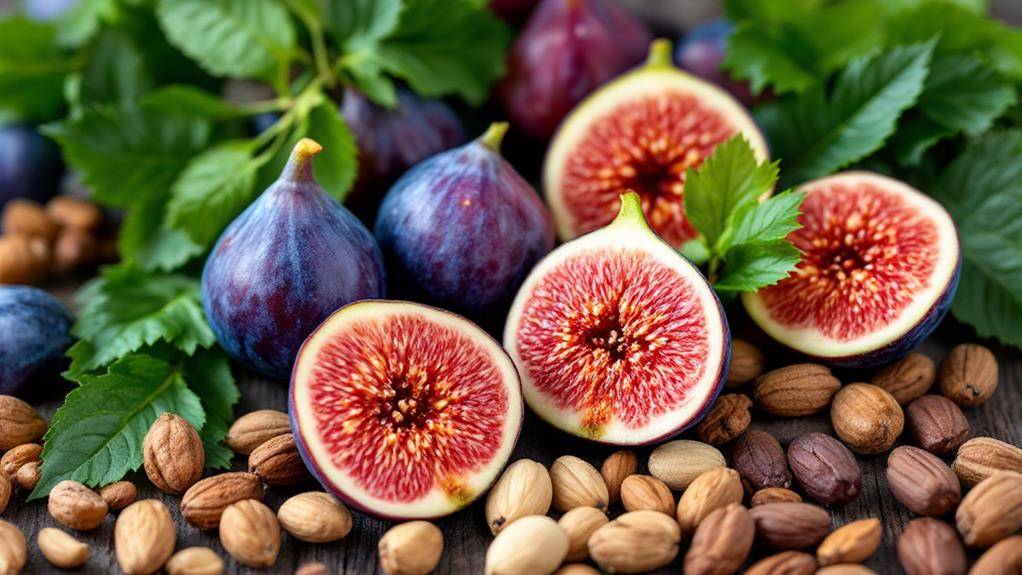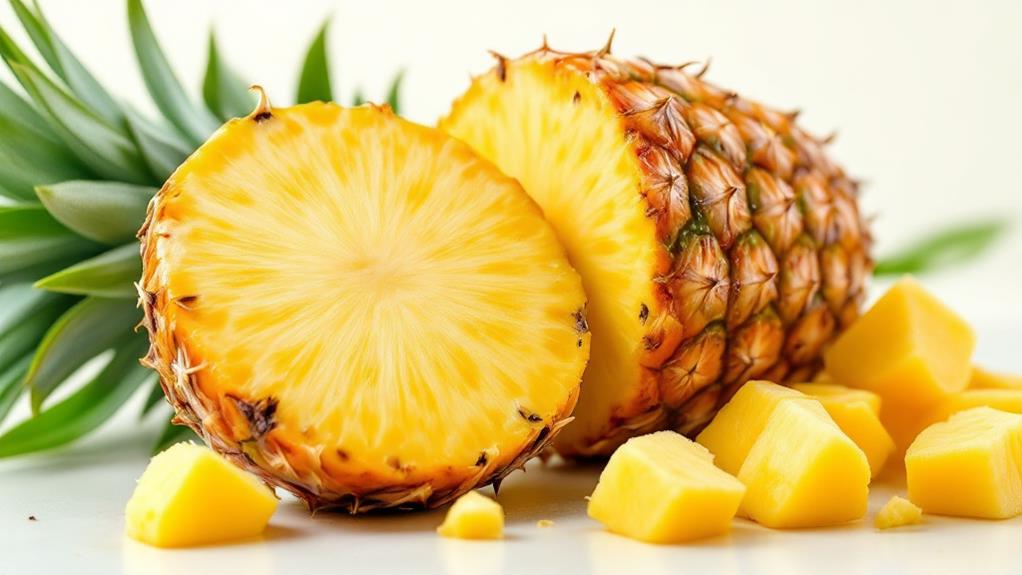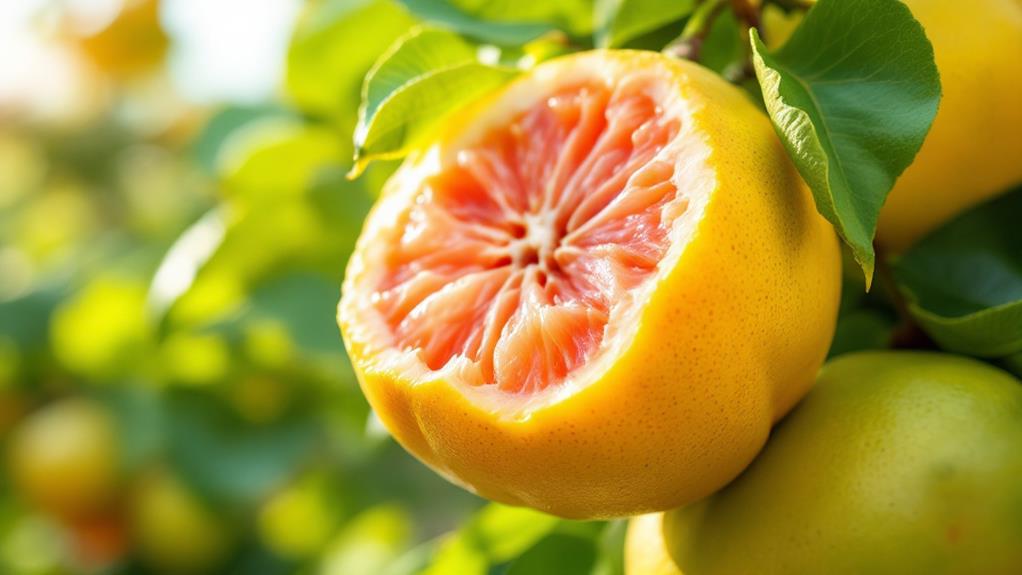Amazing Facts About Figs: Nature's Sweet Superfood

Uncover the fascinating world of figs, nature's sweet superfood, that have thrived for over 12,000 years. These adaptable fruits can flourish in diverse climates, offering two crops per season and living over a century. Figs, like the popular Mission and Golden varieties, are fundamental to California's agricultural heritage. Nutritionally, they pack a punch with high fiber, crucial minerals, and vitamins, promoting digestive health and well-being. Historically, figs are symbols of prosperity, celebrated by ancient cultures. Perfect in both sweet and savory dishes, figs offer endless culinary possibilities. Stick around and reveal more intriguing aspects of this remarkable fruit.
Fig Tree Wonders
Figs have captivated humans for millennia, and it's no wonder when you consider the marvels of the fig tree. These ancient trees, part of the Moraceae family, have been cultivated for over 12,000 years, making them one of the initial foods harvested by humans. The fig tree's remarkable adaptability and resilience are evident in its ability to thrive in diverse climates and soil types. It's a flawless choice for drought-prone areas due to its unique capacity to store water in its trunks, branches, and fruits.
Under ideal conditions, fig trees can grow up to 15-20 feet tall, but with regular pruning, you can easily maintain them at a manageable height of 6-12 feet. This makes them suitable for smaller gardens and spaces. You'll be fascinated by their unique growth pattern, producing two crops each season: the breba crop on last year's growth and the main crop on new growth. Fig trees aren't just a joy to grow; they also offer impressive health benefits. Rich in fiber, antioxidants, and crucial minerals, figs support digestive health and contribute to general well-being. Plus, with a lifespan exceeding 100 years, fig trees are a sustainable choice for long-term cultivation.
Varieties and Production
As you investigate the fascinating world of fig trees, you'll find an intriguing variety of figs cultivated around the globe. Among these, Mission figs stand out with their dark purple hue and sweet flavor. Introduced to the U.S. by Spanish missionaries in the 16th century, Mission figs initially took root at Mission San Diego in 1769. Their introduction marked the beginning of a thriving fig culture in the United States, particularly in California.
California leads the nation in fig production, responsible for 100% of the country's dried figs and 98% of its fresh figs. The state's climate and soil conditions create the ideal environment for growing this delicious fruit. In addition to Mission figs, California also produces Golden figs, recognized for their amber color and nutty taste. These two varieties are not only popular locally but also contribute greatly to the global fig market.
Figs' unique harvesting process involves picking them when fully ripened and partially dried, ensuring their flavors are at their peak. This method improves the figs' texture, making them a sought-after delicacy worldwide. So, when you enjoy a fig, you're savoring a piece of California's agricultural heritage.
Nutritional Powerhouse

You'll be amazed at how figs pack a punch regarding nutrition. They truly are a nutritional powerhouse, offering numerous benefits that make them a fantastic enhancement to your diet. Let's break down why figs deserve a spot on your plate:
- Rich in Dietary Fiber: With 3 grams of dietary fiber per serving, figs promote digestive health and help you feel full longer. This makes them an excellent choice if you're looking to manage your weight or improve your gut health.
- Important Minerals: Figs are a great source of important minerals. They provide 35 mg of calcium, vital for bone health, 232 mg of potassium, which helps regulate blood pressure, and 17 mg of magnesium, essential for muscle and nerve function.
- Vitamin and Antioxidant Enhancement: High in vitamins A, B6, C, and K, figs support numerous bodily functions, from immune health to skin care. Plus, they contain antioxidants that protect your cells from oxidative stress, promoting long-term health.
At just 74 kcal per 100 grams, figs offer a low-calorie snack that satisfies your sweet tooth without compromising your health goals. Incorporating figs into your diet can be a delicious way to enhance your overall wellness.
Historical Significance
While figs offer a wealth of nutritional benefits, their rich history adds another layer of intrigue to this remarkable fruit. Figs are believed to be one of the initial foods harvested by humans over 12,000 years ago. Their historical significance is evident as they appear in diverse religious texts, like the Bible and Quran, often symbolizing prosperity and abundance. Some even refer to figs as the "forbidden fruit," highlighting their deep-rooted presence in ancient narratives.
For the ancient Greeks and Romans, figs symbolized wealth and fertility. These civilizations integrated figs into their diets and rituals, appreciating not just their flavor but also their symbolic power. Romans, in particular, revered figs as restorative foods, believed to improve youthfulness and energy among athletes and the general populace. This association with rejuvenation and liveliness made figs a crucial part of their daily life.
Fast forward to 1892, figs made their initial commercial appearance in the U.S. with Fig Newtons® cookies, marking their entry into modern American culture. This change illustrates how figs have remained a beloved staple, continuing to captivate hearts and taste buds across centuries and continents.
Culinary Versatility

Embracing their culinary versatility, figs delight both amateurs and seasoned chefs with their ability to enhance a myriad of dishes. Regardless of whether you're using fresh or dried figs, they can transform your cooking throughout the year. Their sweet and savory pairing potential is unmatched, making them an ideal ingredient for salads, pastas, and gourmet cheese boards. Imagine the luscious taste of figs complementing salty cheese and nuts, or adding that perfect touch to a meat dish.
The magic of figs doesn't stop there. Fig puree serves as a natural fat substitute in baked goods, elevating moisture and sweetness while cutting down on calories. This means you can enjoy your favorite muffins or cakes without the guilt. When you need a snack or a substitute in a recipe, reach for dried figs. They offer a unique flavor profile similar to dates and come with nutritional benefits that'll satisfy your cravings.
Consider these ways to incorporate figs into your cooking:
- Use fig puree in muffins for a moist, healthy alternative.
- Add dried figs to salads for a sweet, chewy texture.
- Pair fresh figs with cheese for a sophisticated appetizer.
With figs, the possibilities are endless!




